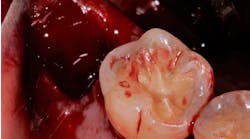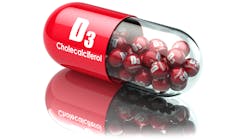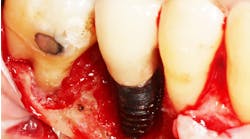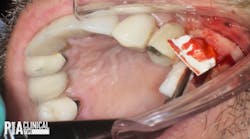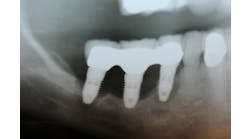Practical applications for periodontal regenerative therapies
The February 2015 issue of Clinical Advances in Periodontics includes five practical application papers that translate the findings from the American Academy of Periodontology’s 2014 Workshop on Regeneration into clinical practice. The goal of the workshop was to broaden the clinical application of tissue regeneration to improve periodontal disease management and the retention of natural dentition.
ADDITIONAL READING |Periodontal regeneration: Back to the future
The following are key excerpts from the practical application papers:
• Periodontal Soft Tissue Root Coverage Procedures: The decision [of] how to approach a specific clinical recession-type defect should be a combination of the clinician’s surgical goals and the patient’s understanding of the anticipated outcome. Research provides clear evidence that SCTG-based procedures provide the best outcome for complete root coverage and an increase in keratinized tissue. The variability in techniques revolves around the inclusion or avoidance of a palatal donor graft.
To read the entire paper on these procedures click here.
• Periodontal Soft Tissue Non-Root Coverage Procedures: Understanding the clinical importance of a minimum amount of attached gingiva in patients with suboptimal hygiene is an important first step in addressing the condition. An analysis of patient-specific factors will help with the appropriate choice of surgical procedures aimed at augmenting the dimension of keratinized gingival tissues. Patient education to address plaque control and encourage smoking cessation helps to enhance the success of these mucogingival surgical procedures.
To read the entire paper on these procedures click here.
• Intrabony Defects: The predictable regeneration of intrabony defects remains an important goal in the management of periodontitis. Important patient-related (e.g. smoking) and defect-related (e.g. defect morphology, root topography, and gingival biotype) factors appear to influence wound healing and the potential to achieve periodontal regeneration. Management should be coupled with an effective oral hygiene and supportive periodontal maintenance program for long-term success.
To read the entire paper on these defects click here.
• Furcation Defects: Attaining predictable regenerative outcomes is dependent on the control of local and systemic factors. A combined treatment approach (barrier and bone replacement graft with or without biologic) generally offers better therapeutic outcome over monotherapy. Class I furcation defects can be managed via conventional periodontal non-surgical and/or surgical therapy, whereas, Class II furcation defects generally attain better outcomes with regenerative therapy. There is weak evidence, limited to case reports, that Class III furcation defects can be successfully treated with regenerative therapy.
To read the entire paper on these defects click here.
• Emerging Regenerative Approaches for Periodontal Reconstruction: At present there are indications that emerging technologies can be used successfully for periodontal regeneration. Cellular allografts represent a current technology where cells and scaffolds are being delivered directly to the periodontal lesion. This example, as well as other emerging technologies, show[s] promise for continued advancement in the field of periodontal regenerative therapy.
To read the entire paper on these approaches click here.

